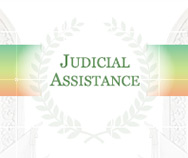Supreme Court rules on first false litigation case
The matter at issue was whether or not the two companies were related and, if they were, was the 86.5 million yuan a real loan. The court formed a collegiate bench to analyze the evidence.
Qu Yeli was a controlling shareholder of Shanghai Oubao, and Wang Zuoxin was the original legal representative of Liaoning Trevi. Wang and Qu were married, which indicated that the two companies were controlled by the couple. At the same time, Zong Huiguang and Wang Qi, a corporate shareholder and the legal representative of Oubao, and Wang Zuoxin, the actual controller of Trevi, Jiang Wenqi, the legal representative of Trevi, and the current shareholder Wang Yang jointly established Shanghai Trevi. These arrangements indicated that all the companies involved were connected.
Oubao, Liaoning Trevi and other related companies also shared employees, all of whom followed Wang Zuoxin’s instructions.
Oubao’s statement and evidence were inconsistent with evidence from other parties and its behavior was not logical. The loan contract appeared to be faked when all the evidence was considered. Evidence regarding the time of the loans was contradictory, as was evidence about the loan values. Oubao accounted for only the money outflow, and not credits coming in. Money transfers existed in more than one account, which contradicted each other. The purpose of the loan was inconsistent with what was in the contract, and the conduct of all the parties illogical. Neither Oubao nor Trevi were able to explain these evidentiary anomalies. Therefore, the Supreme Court found that real loan relations couldn’t be established. The parties had kept unexplainable and casual money transfer records and complicated relations existed among management personnel. The court therefore ruled that Oubao and Trevi were involved in malicious collusion to impair other parties’ legitimate interests. It dismissed Oubao’s appeal and maintained the ruling of Oct 27, 2015 by the Liaoning higher people’s court. It also fined Oubao and Liaoning Trevi 500,000 yuan each. At the same time, the court announced that Zong Huiguang, Jiang Wenqi and Wang Zuoxin would face further legal consequences based on their involvement and attitudes in confession.
Step up efforts to crack down false litigation
False litigation has run rampant for a while, and the case was typical. Such cases are filed so that the parties can gain unlawful benefit. Some divorce cases are filed so that one party or the other can take title to more properties, others are used to reduce creditor’s compensation, and still others aim to hamper ongoing execution of legitimate court orders. Frequent false litigations in civil and commercial cases have severely disrupted the regular litigation process and impaired the interests and social integrity of third parties. The civil procedural law stipulates that parties engaging in malicious collusion to impair others’ legal interests through litigation, mediation or other approaches will have their actions dismissed and face fines, detention or criminal charges. The Supreme Court has been committed to eliminating false litigation actions, and some regional courts have also treated such litigants sternly. However, false litigation cases may be hard to detect since they involve connected companies and friends. Moreover, there is no regulation standardizing the identification of false litigation, which makes them hard to characterize. The court in the case under discussion said that it solved the identification problem by denying the corporate personalities of the two parties, but that that solution would not be available in cases involving non-related parties. But the good news is that the Amendment to Criminal Law categorizes false litigation as crime, which should be an effective deterrent.
Experts have made suggestions to fight false litigation. Some note that courts at various levels can use the Supreme Court case as guidance, some propose a black list system recording the parties of false litigation actions, some hope that general creditors could be joined to judicial proceedings as third parties when their interests could be impaired, and some call for establishment of standards in determining a creditor’s status in litigation and identifying malicious collusion to file false litigation.
Officials from the second circuit court said that it’s necessary to improve the legal system to better fight false litigation and maintain social integrity. As for now, courts at various levels should increase their awareness of these kinds of cases, improve their skills in identifying them, and hold relevant parties accountable.









